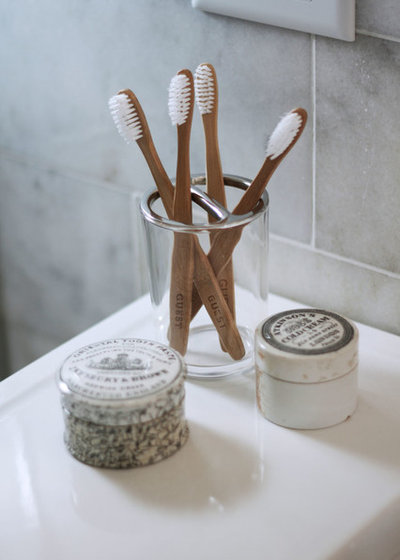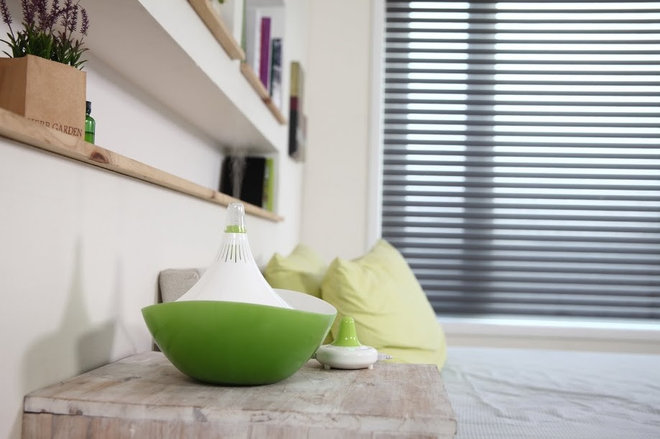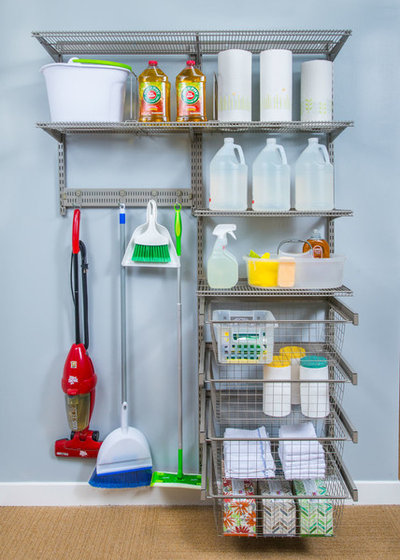Healthy Home Tips for Cold and Flu Season
Put these 10 home habits into practice now and stand a better chance of avoiding a nasty bug this year
Laura Gaskill September 30, 2018
Houzz Contributor. I cover decorating ideas, Houzz tours & the monthly home maintenance
Coming down with a bad cold or the flu is dreadful. And for pregnant women, people with certain chronic medical conditions, children under 5 and people over 65, the flu can even lead to potentially dangerous complications. Thankfully, there are steps you can take at home to increase your chances of staying healthy and to prevent spreading illness when someone in your household is sick. Here are 10 practices to put in place now so you can stay well this year.
1. Stock Every Sink
One of the simplest and most effective tools in your cold and flu prevention arsenal is hand washing. Stock every sink in the house with liquid soap and fresh towels. There’s no need to get antibacterial soap — regular soap and warm water are all you need.
Make sure everyone in your home (especially kids) knows to wash up after blowing their nose, touching their face, eating or using the bathroom.
In addition to frequent hand washing, the Centers for Disease Control and Prevention recommend that you keep your distance from people who are sick, get the flu vaccine and stay home if you do come down with a cold or the flu.
One of the simplest and most effective tools in your cold and flu prevention arsenal is hand washing. Stock every sink in the house with liquid soap and fresh towels. There’s no need to get antibacterial soap — regular soap and warm water are all you need.
Make sure everyone in your home (especially kids) knows to wash up after blowing their nose, touching their face, eating or using the bathroom.
In addition to frequent hand washing, the Centers for Disease Control and Prevention recommend that you keep your distance from people who are sick, get the flu vaccine and stay home if you do come down with a cold or the flu.
2. Leave Shoes at the Door
Keep the germs that have hitched a ride on the soles of your shoes from spreading throughout your house by taking shoes off at the door every time.
As a reminder, position a bench near the door along with a shelf or tray to hold shoes.
A doormat outside your front door and a rug inside can also help collect dirt and germs before you enter your home.
House Rule: Off With Your Shoes
Keep the germs that have hitched a ride on the soles of your shoes from spreading throughout your house by taking shoes off at the door every time.
As a reminder, position a bench near the door along with a shelf or tray to hold shoes.
A doormat outside your front door and a rug inside can also help collect dirt and germs before you enter your home.
House Rule: Off With Your Shoes
3. Keep Germs Off Your Toothbrush
There’s no nice way to put this: Every time you flush the toilet, microscopic particles become airborne and land … basically all over the bathroom.
Putting the lid down before flushing can help, but since you can’t know if others in your household will do this, it’s best to stash your toothbrush and other personal hygiene items in a closed cabinet or drawer.
This is especially important if someone in your household has a cold or the flu, it wouldn’t hurt to make it a regular habit.
Putting the lid down before flushing can help, but since you can’t know if others in your household will do this, it’s best to stash your toothbrush and other personal hygiene items in a closed cabinet or drawer.
This is especially important if someone in your household has a cold or the flu, it wouldn’t hurt to make it a regular habit.
4. Wash Linens and Dishes in Hot Water
Once a week, wash bedding and towels in the washing machine on the hottest setting to kill germs. If someone in your household has the flu, be sure to wash their bedding (including blankets if possible) in hot water, and wash your hands immediately after handling dirty laundry.
If you have a dishwasher with a sanitize setting, use it to clean dishes, especially if someone in the house is sick. When washing dishes by hand, first soak your dishes in a dishpan filled with soapy water as hot as your faucet will go.
Once a week, wash bedding and towels in the washing machine on the hottest setting to kill germs. If someone in your household has the flu, be sure to wash their bedding (including blankets if possible) in hot water, and wash your hands immediately after handling dirty laundry.
If you have a dishwasher with a sanitize setting, use it to clean dishes, especially if someone in the house is sick. When washing dishes by hand, first soak your dishes in a dishpan filled with soapy water as hot as your faucet will go.
5. Get a Humidifier
Indoor humidity levels greater than 40 percent make it significantly harder to spread influenza virus from particles released by coughing, according to research from the National Institute for Occupational Safety and Health. Simply put, if you add moisture to the air in your home (or office) by using a humidifier, you’ll be less likely to catch that bug that’s going around. If you do use a humidifier, it’s important to clean it regularly since humidifiers can breed bacteria.
Indoor humidity levels greater than 40 percent make it significantly harder to spread influenza virus from particles released by coughing, according to research from the National Institute for Occupational Safety and Health. Simply put, if you add moisture to the air in your home (or office) by using a humidifier, you’ll be less likely to catch that bug that’s going around. If you do use a humidifier, it’s important to clean it regularly since humidifiers can breed bacteria.
6. Set up a Cold and Flu Season Cleaning Routine
Cleaning regularly is important during cold and flu season. Your usual cleaning routine might still work, but consider making an extra effort to clean and disinfect before and after hosting a party, and daily when someone in the house is sick. Pay special attention to these spots where viruses and bacteria lurk:
Cleaning regularly is important during cold and flu season. Your usual cleaning routine might still work, but consider making an extra effort to clean and disinfect before and after hosting a party, and daily when someone in the house is sick. Pay special attention to these spots where viruses and bacteria lurk:
- Kitchen counters
- Desks
- Keyboards
- Sinks and faucet handles
- Phones
- Remote controls
- Toilets
- Doorknobs
- Toys
7. Do the Two-Step: Clean and Disinfect
Cleaning with soap and water is an important first step; it doesn’t kill germs but does remove them from surfaces.
To kill the germs that are left after cleaning, either sanitize using high heat (e.g., in the washing machine or dishwasher) or disinfect.
Cleaning with soap and water is an important first step; it doesn’t kill germs but does remove them from surfaces.
To kill the germs that are left after cleaning, either sanitize using high heat (e.g., in the washing machine or dishwasher) or disinfect.
- o disinfect hard, nonporous surfaces, use a product that is labeled as EPA-registered for use against influenza-A. And be sure to read the directions carefully — some disinfectants need to be allowed to air dry for maximum effectiveness.
- 8. Sanitize or Replace Cleaning Tools
Unless your cleaning tools are sanitized between uses, you’re essentially giving germs a free ride around your house — not what you want to hear if someone in your house is sick and you’re hoping not to catch it.
Be sure you’re actually getting your house clean by giving soft items like microfiber cloths and dish towels a spin in the washing machine on a hot cycle between uses. You’ll also want to sanitize or replace these cleaning tools, especially if someone in the house is sick:- Kitchen sponges
- Mop heads
- Cleaning rags
- Scrub brushes
- Dusters
- 9. Be Prepared With Tissues and Wastebaskets
Kiddos especially are more likely to use tissues (ahem, rather than sleeves) and deposit used tissues into wastebaskets if they are super obvious and positioned in key places throughout the house — including by the sofa, on the kitchen table and at their bedside.
10. Take Good Care of Yourself
The power of good self-care can’t be overstated. If you’re concerned about catching a cold or the flu, in addition to taking some of the steps shared here, be sure to get plenty of sleep, eat healthily, exercise regularly, drink lots of fluids and manage your stress.
Your turn: What works for you when it comes to staying healthy during cold and flu season? Share your tips in the Comments!
The power of good self-care can’t be overstated. If you’re concerned about catching a cold or the flu, in addition to taking some of the steps shared here, be sure to get plenty of sleep, eat healthily, exercise regularly, drink lots of fluids and manage your stress.
Your turn: What works for you when it comes to staying healthy during cold and flu season? Share your tips in the Comments!







No comments:
Post a Comment